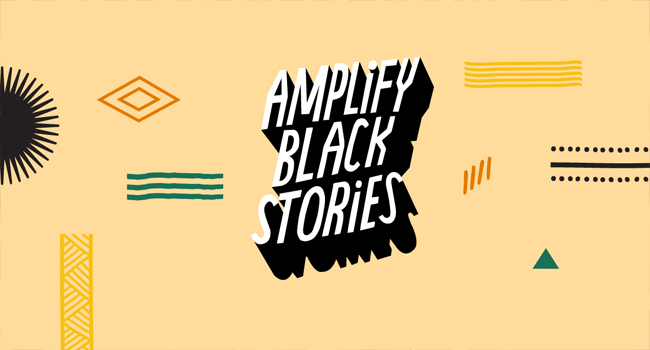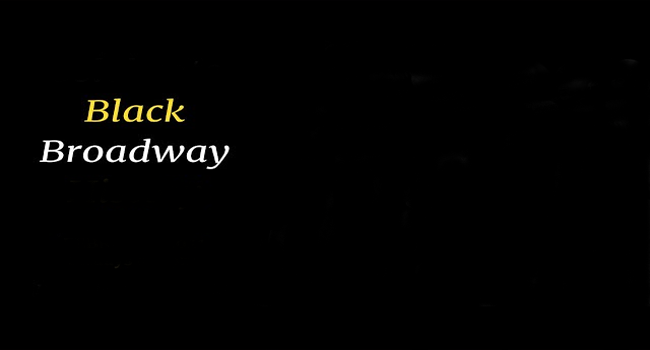Beyond BET: Black Streaming Platforms Amplifying Diverse Stories

Introduction
In recent years, the panorama of amusement has gone through an innovative transformation to the upward thrust of streaming structures. While mainstream offerings like Netflix, Hulu, and Amazon Prime dominate the marketplace, a new wave of systems catering to Black audiences has emerged, surpassing the conventional services of networks like BET. These systems are more complexward; they only amplify numerous tales, reshape the narrative, and supply a far-needed space for underrepresented voices.
The Limitations of Mainstream Representation
For years, Black creators and audiences have grappled with the restricted representation in mainstream media. Although structures like BET (Black Entertainment Television) had been installed to address this gap, they frequently fell short of shooting the full spectrum of Black studies. The want for more actual, various storytelling became increasingly apparent, leading to the birth of alternative streaming platforms that prioritize inclusivity.
The Rise of Black-Owned Streaming Platforms
Several black-owned streaming structures have emerged, each with a unique storytelling and content material creation approach. These structures’ goals are no longer best to entertain but additionally to teach, mission stereotypes, and provide a platform for voices that have been historically marginalized.
- KweliTV: Cultivating Afrocentric Content
KweliTV stands out as a platform committed to curating Afrocentric content from around the globe. With a focus on movies, documentaries, and collections that commemorate Black culture, records, and identity, kweliTV has emerged as a go-to destination for those searching for numerous testimonies. The platform helps impartial filmmakers, fostering a community of creators dedicated to telling true stories.
- Cinemadiso: Empowering Black Filmmakers
Cinemadiso takes a unique method with the aid of no longer only providing a streaming platform but also providing resources and guides for aspiring Black filmmakers. This platform is a launching pad for underrepresented talent, assisting them in bringing their visions to life and attaining an international audience. Cinemadiso is more than a streaming provider; it catalyzes exchange in the movie enterprise.
- SistaFlix: Elevating Black Women in Film and Television
Recognizing the need to increase the voices of Black girls inside the enterprise, SistaFlix focuses on showcasing films and series created with the aid of and focused on Black women. By prioritizing Black women’s narratives, the platform demands stereotypes and fosters empowerment from the network.
The Impact on Representation
These black-owned streaming structures aren’t just reshaping the amusement landscape but also significantly impacting how Black testimonies are informed and received. By providing a platform for numerous narratives, these offerings assign stereotypes, destroy limitations, and provide a more comprehensive representation of the Black enjoy.
- Authenticity in Storytelling:
Mainstream media has regularly struggled to paint the complexities of Black studies authentically. Black-owned streaming structures, on the other hand, prioritize authenticity in storytelling. They provide a space for narratives that reflect the richness and variety of Black cultures, hard one-dimensional portrayals that have long ruled the enterprise.
- Supporting Independent Voices:
Independent Black filmmakers have historically confronted challenges in getting their work recognized and disbursed. Black-owned streaming systems actively assist impartial voices, supplying a platform for memories that would be untold in any other case. This help is crucial for fostering a new era of Black creators who can contribute to the evolving narrative of Black cinema.
- Building Community:
These systems are not simply content delivery structures; they may be community builders. By growing spaces where audiences can hook up with stories that resonate with their reports, those systems foster an experience of network and shared identification. The effect of illustration goes past the display screen, developing a cultural shift in how Black memories are valued and favored.
- Catalyzing Industry Change:
The effect of these Black-owned streaming structures extends past their immediate target audience. As they gain prominence, they assign the reputation quo of the amusement enterprise. The success of systems like kweliTV, Cinemadiso, and SistaFlix demonstrates a developing demand for diverse narratives, prompting mainstream studios and networks to rethink their approach to content material creation. These systems are catalysts for broader enterprise trade, pushing for an extra inclusive and representative media landscape.
- Encouraging Cross-Cultural Understanding:
Black-owned streaming systems now serve Black audiences and play an essential function in fostering cultural knowledge. By showcasing stories that delve into the nuances of Black reports, these systems invite visitors from all backgrounds to engage with narratives that are probably unusual to them. This pass-cultural exchange helps break down stereotypes, create empathy, and contribute to a more fantastic interconnected world where various stories are celebrated and understood.
- Addressing Intersectionality:
One outstanding energy of those systems is their dedication to addressing intersectionality in the Black network. While mainstream media frequently homogenizes Black reports, Black-owned streaming systems are actively trying to find stories that discover the intersections of race, gender, sexuality, and more fantastic. This nuanced approach ensures a more excellent comprehensive representation of the numerous identities within the Black network, fostering more superior knowledge of the complexities that form character stories.
- Innovation in Storytelling:
Black-owned streaming platforms aren’t simply amplifying diverse stories but also pushing the boundaries of storytelling. From experimental narratives to modern documentary codecs, these structures encourage creators to explore new ways of storytelling. This commitment to innovation no longer simply audiences but also unites a student for the enterprise at massive, enabling a more dynamic and creative technique to counter material manufacturing.
- Global Impact:
The attainment of these systems extends a ways past country-wide borders. As the arena becomes increasingly diverse, Black-owned streaming platforms offer a global target market the opportunity to interact with testimonies that transcend geographical and cultural limitations. This worldwide impact not only effectively elevates the profile of Black creators but also contributes to an extra-inclusive representation of Black culture worldwide.
- Empowering Black Creatives:
Black-owned streaming structures cross beyond being content vendors; they serve as systems for empowerment. By actively seeking out and selling Black expertise in front of and behind the digicam, these systems empower creatives who may have previously struggled to break into the mainstream. This empowerment is driving pressure inside the enterprise. It fosters a new era of filmmakers, writers, and actors who can inform their tales with authenticity and satisfaction.
- Educational Opportunities:
Many Black-owned streaming systems apprehend the significance of schooling in selling cultural cognizance and understanding. Some systems go the extra mile by incorporating academic content, documentaries, and discussions that provide context and historical past to the narratives they show off. This dual consciousness of amusement and education guarantees that audiences now enjoy fascinating testimonies and better understand the cultural, social, and ancient contexts that shape those narratives.
- Cultural Preservation:
In a hastily converting world, the maintenance of subculture turns into paramount. Black-owned streaming platforms actively contribute to the protection of numerous Black cultures by showcasing stories that remember traditions, languages, and histories. This upkeep attempt not most effectively resonates with Black audiences; however, also serves as a valuable resource for future generations, ensuring that wealthy cultural heritages are not misplaced or diluted over time.
- Creating Opportunities for Collaboration:
The collaborative nature of those platforms extends beyond their on-the-spot content introduction. They often become hubs for collaboration between Black creatives, fostering surroundings where filmmakers, writers, actors, and manufacturers can join and collaborate on projects. This collaborative spirit not only strengthens the Black innovative community but also results in a richer tapestry of stories that reflect a large number of views and reviews.
- Championing Social Justice:
Beyond storytelling, many Black-owned streaming platforms actively engage with social justice troubles. By presenting content that addresses systemic racism, inequality, and social justice, those structures make contributions to critical conversations. They function as platforms for advocacy, shedding light on issues that need to acquire a better interest in mainstream media and inspire visitors to become exchange marketers.
- The Future Landscape of Entertainment:
As those structures continue to thrive, it becomes apparent that they are shaping the destiny panorama of enjoyment. The achievement has an impact on Black-owned streaming systems undertaking conventional notions of what constitutes mainstream content material. This paradigm shift suggests that audiences must be the most equipped for diverse tales but are actively trying to find them, signaling a transformative technology wherein inclusivity and representation are non-negotiable elements of the leisure industry.
Conclusion
As Black-owned streaming systems gain traction, they play a pivotal position in reshaping the enjoyment landscape. Beyond the confines of traditional networks like BET, those platforms amplify various memories, challenge stereotypes, and provide a platform for underrepresented voices. In doing so, they contribute to an extra inclusive and accurate illustration of the Black Revel, leaving an indelible mark on the destiny of storytelling.
FAQs
- What are Black-owned streaming systems?
Black-owned streaming systems are digital services devoted to curating and showcasing content material created with the aid of and for the Black community. These structures cross past traditional mainstream offerings, aiming to offer more real and numerous representations of Black reports in film, television, and other forms of visible storytelling.
- How do Black-owned streaming systems differ from mainstream services?
While mainstream streaming services offer an extensive range of content, Black-owned structures, in particular, focus on amplifying Black voices and testimonies. They prioritize narratives that discover the richness and variety of Black cultures, addressing the restrictions frequently found in mainstream media’s illustration of the Black enjoy.
- Are these structures only for Black audiences?
No, Black-owned streaming structures are not entirely for Black audiences. While they do cater to the Black network by offering accurate and numerous content material, the tales they show off regularly resonate with audiences from diverse backgrounds. These systems contribute to pass-cultural information and invite visitors of all ethnicities to engage with narratives that might not be widely represented in mainstream media.
- What content material may be observed on Black-owned streaming systems?
Black-owned streaming systems provide a wide variety of content, such as movies, documentaries, collections, and academic programming. The content regularly explores numerous genres, from drama and comedy to technological know-how fiction and historical pieces. These structures are acknowledged for their commitment to showcasing the intensity and breadth of Black stories.
- How do Black-owned streaming structures guide independent filmmakers?
Many Black-owned streaming platforms actively assist impartial filmmakers by providing a platform for their paintings. They may additionally offer resources, funding, and mentorship to aspiring creators, helping them carry their specific visions to an international target audience. This assistance is essential in fostering a new era of Black filmmakers and storytellers.










